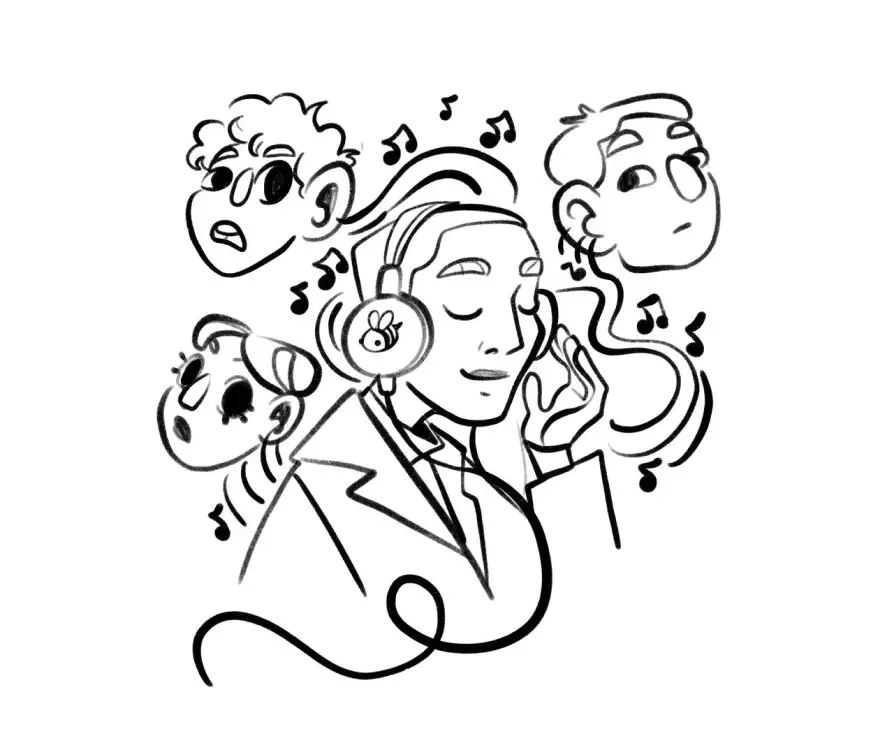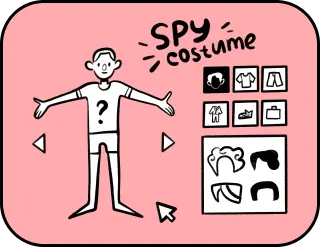Ode to Headphones
This situation was not simulated or invented by a neuron. Theoretically, it could have happened in one of the metaverses, but it happened on the snowiest evening in one of the cozy cafes in New York.
Two students, who had walked along the Fifth Avenue to their heart’s content, having practically frozen their palms and tested their shoes, clothes and stamina for frost resistance, entered a cafe that attracted them with its modesty and warm color of lights.
One of the students, having settled comfortably and blowing warm steam from his mouth, was surprised to discover that during the walk he had lost one of the things that was important to him. He didn’t want to believe in his absent-mindedness and looked under the table, patted his pockets again and even took off his left shoe. In vain.
The second student had been watching his friend’s strange manipulations all that time and offered:
– Tell me what you have lost and I will help you find it
To which the student, who had practically come to terms with his loss, answered him:
– I’ve lost my only guides into the world of vivid images and memories, which sometimes helped me completely move away from unnecessary noise and fuss in order to completely immerse myself in what I was doing
And while the student who offered help was going through different options in his head that would fit the description of the thing, he added:
– I’ve lost my headphones
The student had already managed to imagine the most terrible of all losses – the shares of a huge oil company and exclaimed with disappointment:
– Headphones? Brother, you’ve really lost your mind. They are just headphones! Great loss!

– You shouldn’t be talking like that about headphones, young man. – a plump middle-aged man objected to him from the next table, biting off a substantial piece of a salty snack. – 70 years ago Ray Bradbury in his novel “Fahrenheit 451,” described a futuristic radio that could be worn in the ear. It would be “a hidden wasp nestled in its special pink warm nest,” he wrote, and a conduit for “an electronic ocean of sound, music and conversation coming to the shore of [your] sleepless mind.” Remember? How many years have passed, but how clearly the characteristics of the headphones were already described then. – And the man dreamily switched to a snack
– Are you talking about headphones? – asked a girl who had just entered, shaking snow off her jacket. – In-ear listening devices have been around for at least a century. Beginning in the 1850s, doctors inserted ivory stethoscope tips into each ear, and a few decades later similar “ear tubes” were used to listen to recorded music.
That’s right, – the waiter confirmed, carefully accepting the jacket from the girl. – Thomas Edison is known to have attached stethoscope-like headphones to his phonograph, which reproduced sound from wax cylinders. Some machines had several sets of tubes hanging down like tentacles on a jellyfish, so that several people could listen at the same time.
You just want to dream and remember Fahrenheit, – a gentleman grumbled dissatisfied, leaving a generous tip. – By the way, some people made good money in those days when headphones did not sit firmly on the ears as they do now or, on the contrary, were too tight. Some manufacturers began to line them with foam. Others sold kits for taking custom impressions of a person’s ear canals. Customers took impressions of their own ears and then mailed them to receive a pair of custom sensors. I wish I could bring that time back!
– All the best things in the world were invented by physicists! – a boy said in the voice of Sheldon Cooper, taking napkins from the next table. His red hair and bulky glasses distinguished him from the character of the famous series – We all know that two magnets at a certain distance from each other begin to interact with each other: attract or repel. The same phenomenon is used in any audio speaker. A permanent magnet made in the shape of a circle is inside the speaker. A coil of copper wire is placed in the hole in the middle and connected to the membrane. A conductor in a magnetic field is acted upon by an alternating force, which moves the coil and the diffuser attached to it. That creates compression and rarefaction of air, which causes sound to appear.
– Right! – another guy picked up, also wearing bulky glasses, – It is important to understand physical processes, otherwise you can believe in magic. Of course! You have some kind of device from which all sorts of information magically transfers to another device hanging on your ears. It’s like someone is speaking directly into your ears.
– Isn’t that so? – the man joined the conversation again, having ordered a new portion of the salty delicacy.
No, it isn’t, – answered the guy who looked like Sheldon Cooper. – What is a melody for you is a sequence of ones and zeros for your device – a code. It can be seen, but not heard. Therefore, to transfer the melody to your ears, the reverse process occurs – the sequence of zeros and ones understood by computers and smartphones is turned into a set of electrical signals that causes the speakers to produce sound.
– The third does not mean extra! – The woman who had been listening to the entire conversation from the very beginning said, putting hats on the twins and giving them licorice sticks. – In 2012 wireless headphones became a part of our lives. In them, between the sound converter, which turns zeros and ones into a melody, and the speaker, which is inserted into your ears, there is another link – bluetooth. The device and earphone exchange identification numbers, thanks to which they will recognize each other in the future. But to transmit sound through another link, the sound must be re-compressed
– That’s what I’m talking about! – the gentleman who had left a generous tip but forgotten his hat grumbled again. – Demand creates supply. In 1985 the telemarketing industry began to actively develop and manufacturers had to turn their attention to creating comfortable headsets. And with the advent of bluetooth, all sorts of codecs appeared that could convert signals. What to say about noise reduction systems or surround sound technologies… So much for “just headphones”
“It’s absolutely true that behind every invention that already seems ordinary to us there is something that we rarely remember – people, eras, calculations, economics, needs…” the owner of the establishment himself joined the conversation.
He wanted to continue his thought, but was surprised to find that the two students who had caused the heated discussion had left.
They must have gone to get some headphones, – he thought.
The shops in that area closed at five.

We illuminate scientific horizons with an intensity that rivals a laser.
Thank you!




